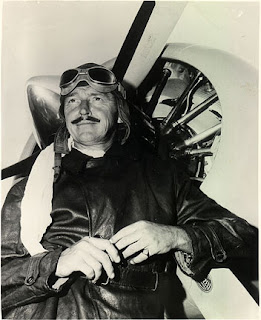On this date in 2007, the
Civil Air Patrol was involved in a search for a light plane that crashed in Georgia. The search was a delayed because of a miscommunication between the FAA and the AFRCC.
An excerpt from Avstop.com:
On April 26, 2007, about 1430 eastern daylight time, a Piper PA-38-112, N9247T, crashed into trees and rising mountainous terrain at Amicalola Falls State Park in Dawsonville, Georgia, while attempting to stay below overcast cloud conditions.
The certificated commercial pilot, the sole occupant, eventually died as a result of the accident, and the airplane sustained substantial damage. The flight was operated as a personal flight under the provisions of 14 Code of Federal Regulations (CFR) Part 91, and no flight plan was filed. Instrument meteorological conditions prevailed near the accident site.
The flight originated from Habersham County Airport, Cornelia, Georgia, about 1400, destined for Lunken Field, Cincinnati, Ohio. Evidence indicates that the pilot likely survived the accident and activated an emergency transponder code but died before the airplane was located.
|
|
Shortly after the crash, controllers at the Atlanta Air Route Traffic Control Center (ZTL) noticed an unidentified stationary radar target about 50 nautical miles (nm) north of Atlanta. Beginning about 1534, the target transmitted transponder code 7700, which is a dedicated emergency code reserved for use by aircraft in distress, and its use by the accident pilot caused a special flashing "EMRG" alert to appear on ZTL radar displays. . . |
Once the report for the incident south of Atlanta was closed, that also ended any activity related to the ELT reports and radar observations north of Atlanta provided by ZTL’s TMC. |
| Thus, no SAR effort was begun for N9247T until family members reported the accident airplane missing the following day. As there was evidence that the pilot survived the crash, this was a critical SAR failure. |
Based on the family's report of the missing airplane, the Dayton, Ohio, Flight Service Station (FSS) issued an Alert Notice (ALNOT) about 1247. According to the AFRCC’s mission log, the AFRCC began attempting to locate the airplane immediately upon receipt of the ALNOT. Air searchers located the airplane about 49 hours after the accident, and the ground team arrived shortly afterward. The team reported that the pilot was deceased. |
During the search, the AFRCC activated Civil Air Patrol (CAP) wings in four states, coordinated information gathering activities with numerous FAA air traffic control (ATC) and Lockheed flight service facilities, and obtained radar analysis assistance from CAP and U.S. Air Force (USAF) air defense personnel. The extensive effort was necessary mainly because the AFRCC controller did not understand the FAA’s communication about the existence and location of the 7700 emergency signal being transmitted by N9247T. |
---
Want to learn more or join the Civil Air Patrol? Browse http://gocivilairpatrol.com
Sphere: Related Content












